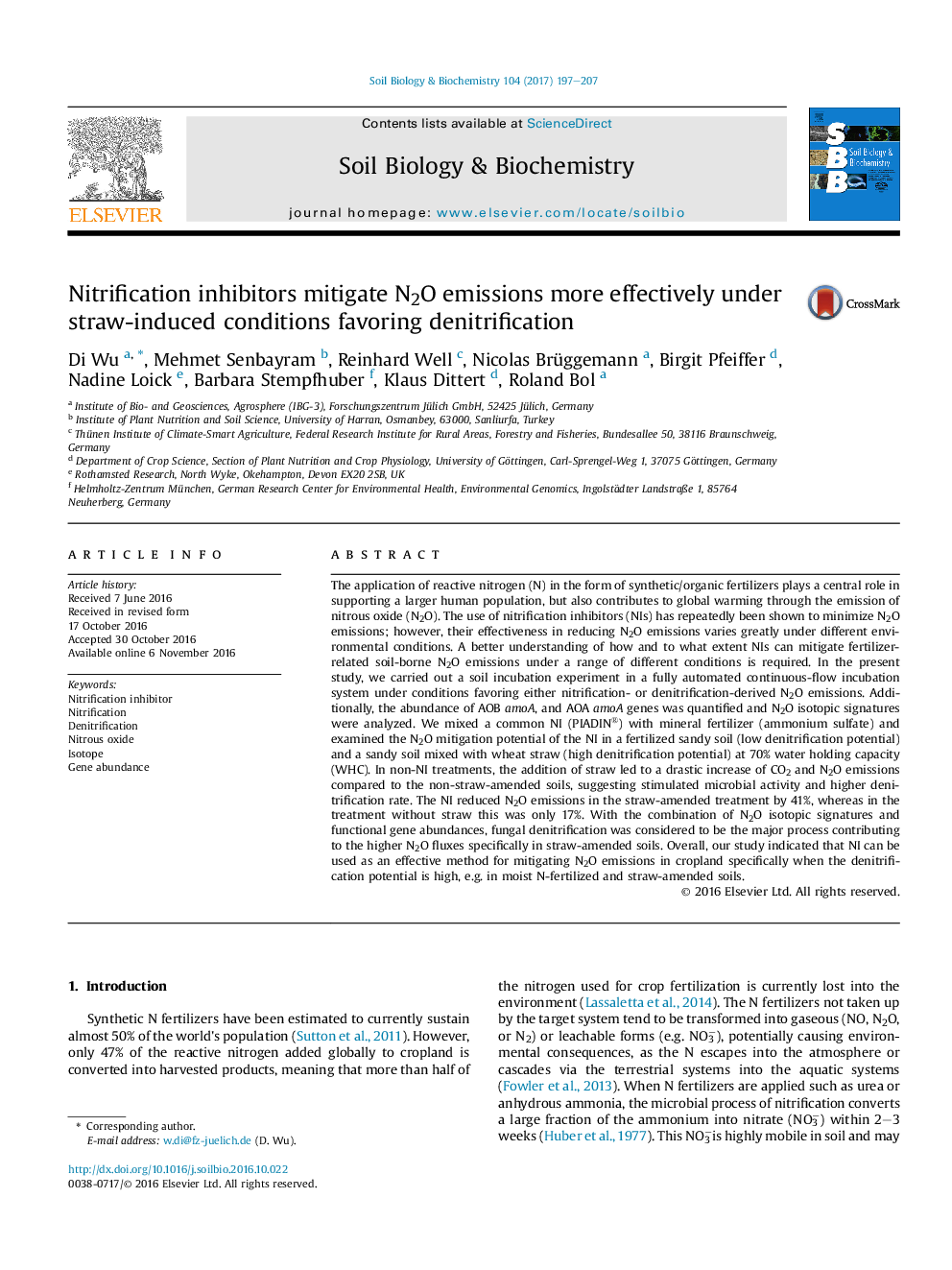| کد مقاله | کد نشریه | سال انتشار | مقاله انگلیسی | نسخه تمام متن |
|---|---|---|---|---|
| 5516460 | 1542580 | 2017 | 11 صفحه PDF | دانلود رایگان |
- Straw addition increases soil N2O emission from mineral N fertilizer.
- NI reduce N2O emissions only indirectly during denitrification.
- Fungal denitrification may be the major source of N2O emission in this study.
The application of reactive nitrogen (N) in the form of synthetic/organic fertilizers plays a central role in supporting a larger human population, but also contributes to global warming through the emission of nitrous oxide (N2O). The use of nitrification inhibitors (NIs) has repeatedly been shown to minimize N2O emissions; however, their effectiveness in reducing N2O emissions varies greatly under different environmental conditions. A better understanding of how and to what extent NIs can mitigate fertilizer-related soil-borne N2O emissions under a range of different conditions is required. In the present study, we carried out a soil incubation experiment in a fully automated continuous-flow incubation system under conditions favoring either nitrification- or denitrification-derived N2O emissions. Additionally, the abundance of AOB amoA, and AOA amoA genes was quantified and N2O isotopic signatures were analyzed. We mixed a common NI (PIADIN®) with mineral fertilizer (ammonium sulfate) and examined the N2O mitigation potential of the NI in a fertilized sandy soil (low denitrification potential) and a sandy soil mixed with wheat straw (high denitrification potential) at 70% water holding capacity (WHC). In non-NI treatments, the addition of straw led to a drastic increase of CO2 and N2O emissions compared to the non-straw-amended soils, suggesting stimulated microbial activity and higher denitrification rate. The NI reduced N2O emissions in the straw-amended treatment by 41%, whereas in the treatment without straw this was only 17%. With the combination of N2O isotopic signatures and functional gene abundances, fungal denitrification was considered to be the major process contributing to the higher N2O fluxes specifically in straw-amended soils. Overall, our study indicated that NI can be used as an effective method for mitigating N2O emissions in cropland specifically when the denitrification potential is high, e.g. in moist N-fertilized and straw-amended soils.
Journal: Soil Biology and Biochemistry - Volume 104, January 2017, Pages 197-207
